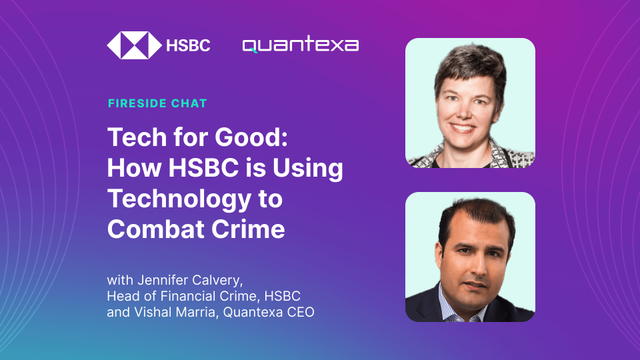Decision Intelligence is the Key To Stopping Modern Slavery And Human Trafficking
Human trafficking and modern slavery violations are happening across the world. Here's what financial institutions need to know about anti-slavery operations
Human trafficking and slavery have reached epic proportions worldwide fueled by wars, economic crises, climate change, political unrest, and demographic pressures in countries of origin.
Criminal networks have also become far more sophisticated and tech-savvy in their abilities to communicate and collaborate with other criminal networks, diversify smuggling routes, and evade detection as illicit profits from the human trafficking trade skyrocket.
The recent tragedy off the coast of Greece in which more than 600 migrants lost their lives is yet another heartbreaking example of how migrants themselves are being forced to take higher risks in their attempts to seek safer places to live.
A recent report from Europol stated that “widely available digital services and tools online are thoroughly exploited by migrant smuggling networks at all stages of the process. Online advertisement of smuggling services, routes, and prices has become increasingly professional, with criminals using several platforms in parallel, updating information regularly, and sharing videos and reviews of successful operations.”
The International Labor Organization (ILO) recently stated there are “50 million people in situations of modern slavery on any given day, either forced to work against their will or in a marriage that they were forced into. This number translates to nearly one of every 150 people in the world.”
The report goes on to say that 27.6 million people are in situations of forced labor, which translates to 3.5 people in forced labor for every thousand people in the world. Even more disturbing is the fact that women and girls make up 11.8 million of the total in forced labor. Even more shocking is that more than 3.3 million of all those in forced labor are children!
Human trafficking and modern slavery violations are happening across every business sector from construction in the UK to migrants in the Asia-Pacific region being exploited in the fishing industry. The Australian Institute of International Affairs reports that APAC, a perpetual hot spot for human trafficking and slavery, harbors the greatest number of forced laborers, with somewhere around 11 million people at any one time—nearly half of the global total of approximately 21 million. Austrac is one organization that has been instrumental in helping to shut down illegal trafficking operations in APAC.
What financial institutions need to know about anti-slavery operations
At the heart of forced labor, in all its forms, is the exploitation of vulnerable people for financial gain. This makes the financial services industry a key component in facilitating these crimes and a focus area in which to fight these offenses—particularly businesses exposed to cash or cash equivalents, such as money services, remittance businesses, and retail banking.
For example, to help launder the resulting proceeds of an illicit act, criminals or their representatives will use a range of personal and/or business accounts. From these accounts, a full range of legitimate financial products and services become available, including cross-border payments, correspondent banking, and trade financing, as well as the manipulation and usage of usual everyday retail banking services.
These legitimate financial products enable criminal networks to fund activities such as recruitment advertising, flights and transport, food, entertainment, and accommodation for enslaved captives. They also help crime syndicates to create distance and complexity between themselves and the original illicit source of funds.
In addition, criminals may seek financial loans and bank investments in businesses linked to industries such as agriculture, cleaning, food packaging and processing, manufacturing, food services and hotels, retail, transport, and warehouse and distribution. While appearing legitimate on the surface, these industries are considered to have high-risk exposure to forced labor and modern slavery due to their complex supply chains and historic recruitment of migrant workers.
Uncovering criminal activity with AI-enabled technology
Although criminals seek to anonymize themselves and their networks, financial footprints and data trails clearly exist and can be used to detect and disrupt these operations using technology to provide the necessary insights and intelligence to support investigations.
Uncovering suspected forced labor and human trafficking typologies are two of many issues that are best tackled using Quantexa’s Decision Intelligence (DI) Platform. This innovative solution utilizes Entity Resolution to connect tens of billions of internal and external data points to create context—entity graphs that reflect the real world, enriched with vital intelligence about the network of relationships between people, organizations, and places.
Using a combination of big data, network analytics, and artificial intelligence (AI), Quantexa’s DI Platform reveals the hard-to-find, hidden links between individuals, companies, and their counterparties, transactions, and addresses across the entire supply chain.
By resolving seemingly unconnected entities, context-driven AI technology builds a detailed picture of the criminal’s network, and how the victim and the various professional enablers that facilitate and/or benefit from this activity are connected.
When applied to human trafficking, connecting the dots between information from NGOs and news-source databases used by known traffickers, with internal data held by financial institutions, investigators can gain actionable intelligence.
Traditional human intelligence is often gathered on the ground within a particular country by charities using news sources and hearsay. And many charities only operate within a single country. The majority of trafficking, however, happens between different countries, so this information needs to be shared with governmental and intra-governmental organizations to compile a profile of a trafficker or their broader activities. The problem with such traditional intelligence is that it’s usually not enough to rapidly identify a network of traffickers, particularly within financial services companies.
Now, financial institutions are helping to combine this human intelligence with innovative technologies that connect the bank’s internal data with third-party sources to unveil hidden connections.
A network example of exploitation within construction
Through the application of Entity Resolution and Graph Analytics, the following example identifies a range of forced labor and modern slavery risk indicators that suggest this construction project is undertaking labor exploitation using migrant workers. A recent report from the National Crime Agency in the UK shows just how widespread modern slavery has become in the construction industry.
This network is based on the following sample industry red flags run across a resolved dataset that combines the financial institution’s data with external third-party data to find and score hidden connections and behaviors:
Construction projects that outsource labor supply agencies rather than directly employing workers, giving limited oversight to the contracts that those workers have with the agency employing them
Construction agencies that recruit high volumes of migrant workers
Many workers are housed in one location and driven each day to and from the construction site
![]()
Using a combination of human intelligence and digitally compiled insights, Decision Intelligence is playing a progressively global role in detecting and fighting forced labor by increasing transparency across the entire supply chain, helping to identify victims, traffickers, counterparties, and their connections.
Learn more about how Decision Intelligence can help your organization leverage data to fight financial crime, modern slavery, and forced labor here.
You can also share your thoughts and experiences of tackling this challenge on the Community here.


